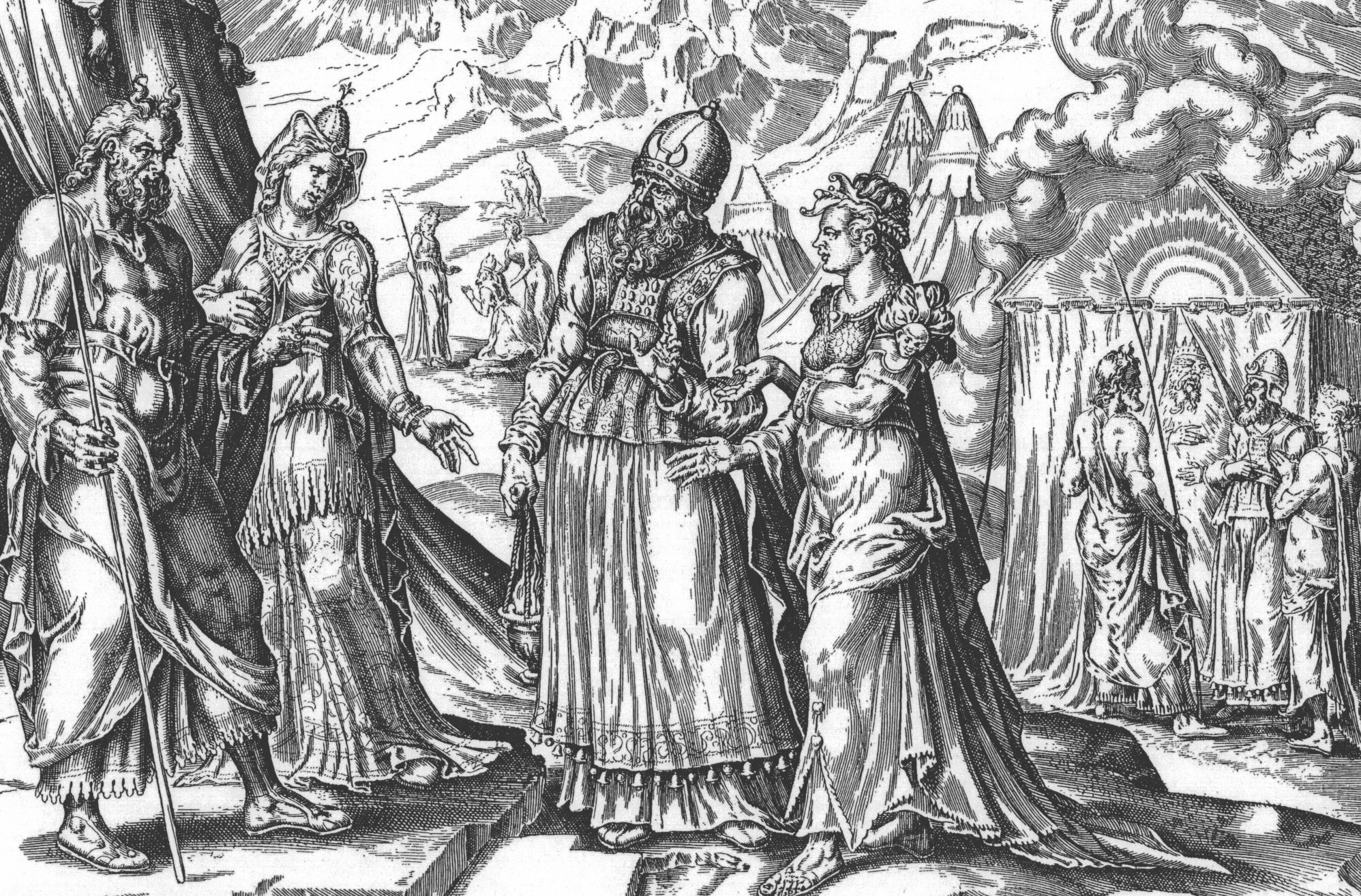Tharbis on:
[Wikipedia]
[Google]
[Amazon]
Tharbis (alternatively Adoniah''Book of Jasher'', 23.5-25.5), according to Josephus, was a Cushite princess of the Kingdom of Kush, who married
 Some have suggested that this story is an invention, arising from the "enigmatic" verse in Numbers 12:1 that states "
Some have suggested that this story is an invention, arising from the "enigmatic" verse in Numbers 12:1 that states "
Moses
Moses hbo, מֹשֶׁה, Mōše; also known as Moshe or Moshe Rabbeinu (Mishnaic Hebrew: מֹשֶׁה רַבֵּינוּ, ); syr, ܡܘܫܐ, Mūše; ar, موسى, Mūsā; grc, Mωϋσῆς, Mōÿsēs () is considered the most important pro ...
prior to his marriage to Zipporah as told in the Book of Exodus.
Alleged family
In Josephus' account, Tharbis was the daughter of an unnamed king of " Saba" (which he claims was in Ethiopia, not Yemen) who lived before the Exodus. In the medieval rabbinic version found in the Sefer HaYashar, she is instead the king's wife, not his daughter, and the king is named Kikianus.According to Josephus
According to the first-century Romano-Jewish scholar Josephus, in Moses' early adult life, he had led the Egyptians in a campaign against invading Ethiopians and defeated them. While Moses was besieging the city of Meroe, Tharbis watched him lead the Egyptian army from within the city walls, and fell in love with him. He agreed to marry her if she would procure the deliverance of the city into his power. She did so immediately and Moses promptly married her. The account of this expedition is also mentioned by Irenaeus. After the war, when Moses sought to return to Egypt – Tharbis is said to have resisted and insisted that he remain in Ethiopia as her husband. He then, being "most skilful in astronomy", cast two rings; one which caused the wearer to become forgetful, and the other to cause the wearer to remember all. He gave the first ring to Tharbis, and wore the second himself, and waited for her oblivious nature to lose interest in retaining him as a husband – and when she had forgotten her love for him, he returned to Egypt alone. Some have suggested this period may have started when Moses was 27, and that he remained with Tharbis for forty years; although this number contradicts the traditional sources which suggest that Moses killed an Egyptian overseer when he was approximately 40 years old himself.Theories
 Some have suggested that this story is an invention, arising from the "enigmatic" verse in Numbers 12:1 that states "
Some have suggested that this story is an invention, arising from the "enigmatic" verse in Numbers 12:1 that states "Miriam
Miriam ( he, מִרְיָם ''Mīryām'', lit. 'Rebellion') is described in the Hebrew Bible as the daughter of Amram and Jochebed, and the older sister of Moses and Aaron. She was a prophetess and first appears in the Book of Exodus.
The Tor ...
and Aaron
According to Abrahamic religions, Aaron ''′aharon'', ar, هارون, Hārūn, Greek (Septuagint): Ἀαρών; often called Aaron the priest ()., group="note" ( or ; ''’Ahărōn'') was a prophet, a high priest, and the elder brother of ...
spoke against Moses because of the Cushite woman whom he had married". Miriam is punished for her rebuke of her brother by being afflicted with leprosy. Moses is depicted with an Ethiopian wife in a 17th-century painting by Jordaens.
It is also suggested that Artapanus of Alexandria may have concocted the story "to impress his pagan audience" with "such a love story".
In fiction
In 1937,Amy Redpath Roddick
Sir Thomas George Roddick (July 31, 1846 – February 20, 1923) was a Canadian surgeon, medical administrator, politician, and founder of the Medical Council of Canada born in Harbour Grace, Newfoundland
He is known for his work in helping ...
published an 80-page "poetic drama" telling a fictionalised account of the life of Tharbis.
Tharbis is portrayed in Cecil B. DeMille's 1956 biblical epic '' The Ten Commandments''. In the film, she appears briefly and is not Moses's wife.
References
{{reflist, 2 Moses Kingdom of Kush African princesses Ancient princesses